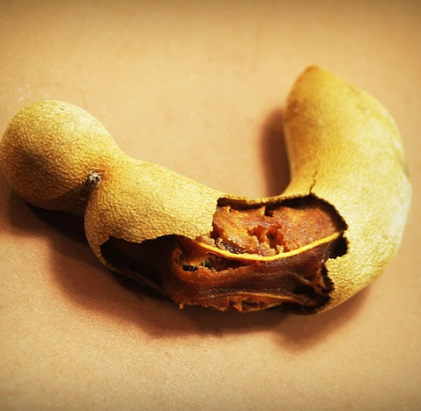- Phytopedia
- FRUITS
- Tamarind

Tamarind is used to treat jaundice, dysentery and hemorrhoids
GEEK TALK
Tamarindus indica
BUT WE TALK
amarind, Indian Date,Tamarindo (Spa), Puli (Tam), Huli (Kan), Imily (Hin), Tamarin (Fr)
DID YOU KNOW?
Don’t get fooled by the Latin name. Although synonymous with South Indian cooking, Tamarind is indigenous to tropical Africa, grows wild in Sudan and was introduced and adopted in India centuries ago from where it spread to other parts of the Middle East and the Far East.
The Arabs call it “Tamar Hindi” (Indian date, from the date-like appearance of the dried pulp”). Hence “Tamarind”. Today South Asia and Mexico are the largest producers and consumers of Tamarind.
It is a tropical long-lived, bushy tree, which grows 40 to 60 feet and is comfortable in hot, humid and dry climates. The tree is a major shade producer given its girth, dense foliage, and wide canopy.
Tamarind has a characteristic sour taste with a slight undertone of sweet (but do not even remotely think of its taste as similar the Chinese sweet & sour soup!). Due to its signature sourness, it is the base raw material for daily cooking of almost every type of sambar, several recipes of rasam and chutneys.
Puliogare or Tamarind Rice is major South Indian delicacy and chinta chiguru is a delicious and healthy Andhra soup that is a dal made with the tender Tamarind leaves and Moong.
Tamarind Ade is an interesting drink popular in the Bahamas, Mexico and several countries in Africa. In Thailand, Tamarind seeds are used as a coffee replacement. In fact, Tamarind seeds do look like coffee beans only a little larger and shinier.
Its unique sweet and sour taste can be thought of a substitute for lime, lemons, vinegar, and cocum, only significantly, healthier.
KITCHEN PHARMACY
- The whole tree is a medicine chest! The leaves, the fruit, the seed, and even the bark offer a range of incredible health benefits, both for wellness and for treatment of various disorders.
- The Tamarind sourness comes from Tartaric acid a powerful anti-oxidant. Its pulp contains non-starch polysaccharides or important dietary fibers that aids digestion and prevents constipation.
- “..Dietary fibers in the [Tamarind] pulp bind to bile salts (produced from cholesterol) and decrease their re-absorption in the colon; thereby help excretion of “bad” or LDL cholesterol levels from the body”.
- Tamarind preparations are recognized as refrigerants (used to reduce fevers), laxatives and carminatives (soothes the gut walls, and induces the expulsion of gas).
- The paste is used on inflammations, to gargle for a sore throat and, mixed with salt, as a liniment for rheumatism. The pulp is even said to aid the restoration of sensation in cases of paralysis.
- Lotions and extracts made from them are used in some cultures for treating conjunctivitis, as an antiseptic, as a vermifuge, (to remove intestinal worms) for treatment of dysentery, jaundice, erysipelas (a bacterial skin infection) and hemorrhoids.
- The bark of the tree is regarded as an effective astringent, tonic and even a febrifuge (fever reducer).



